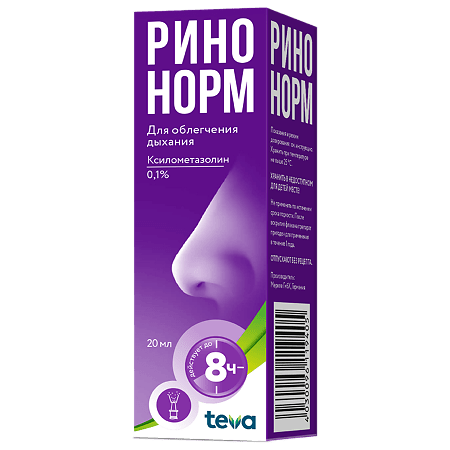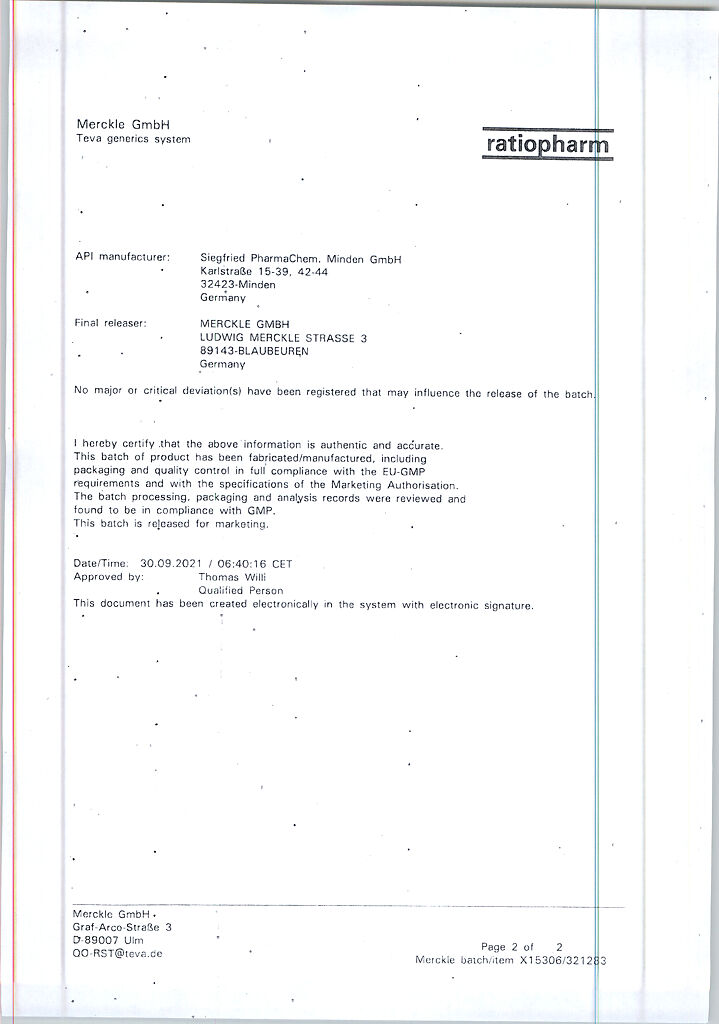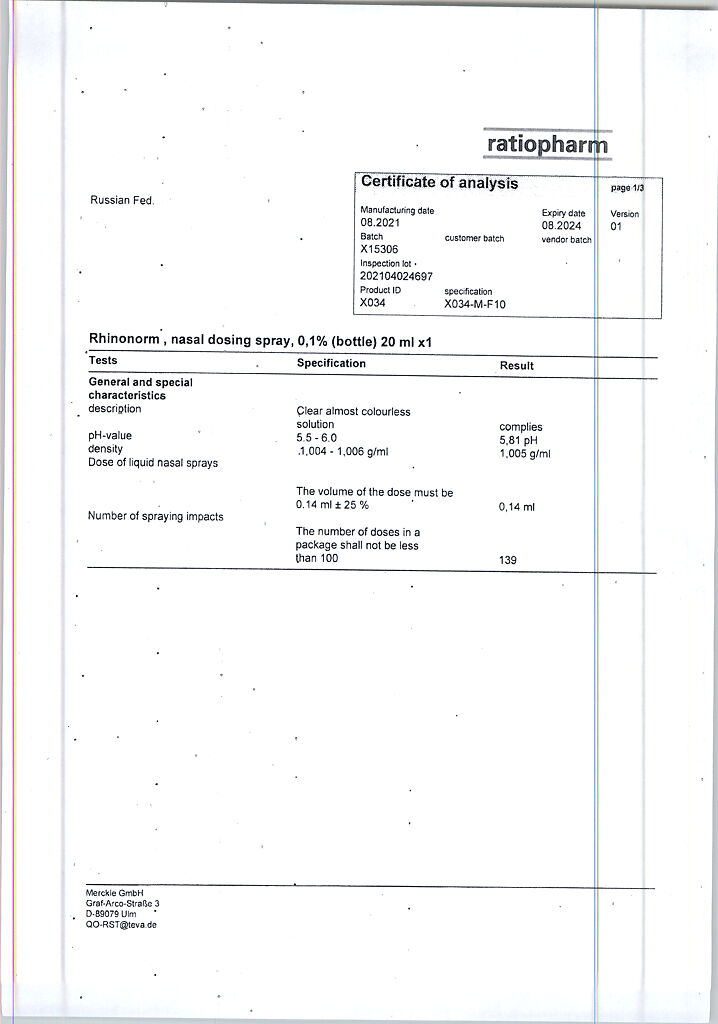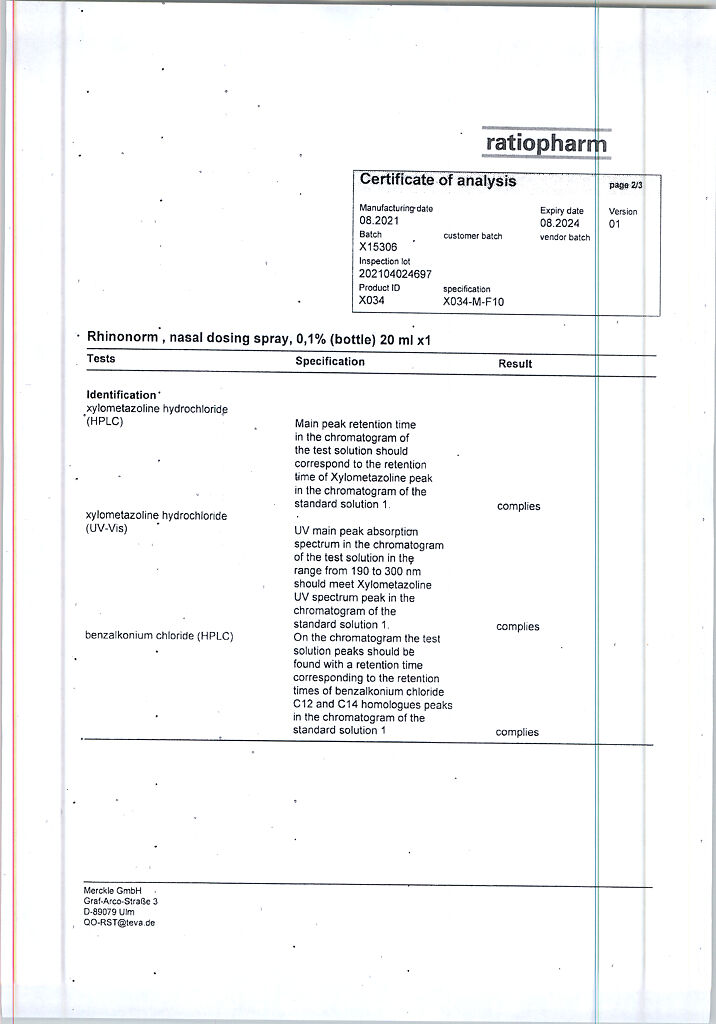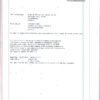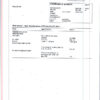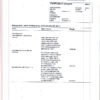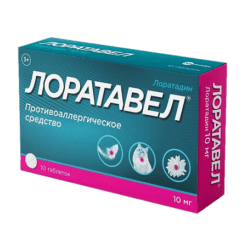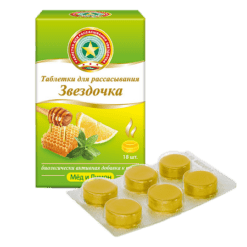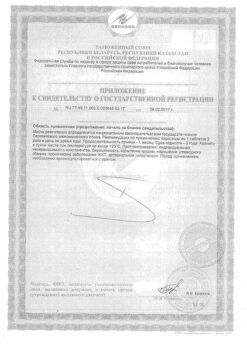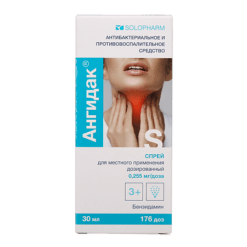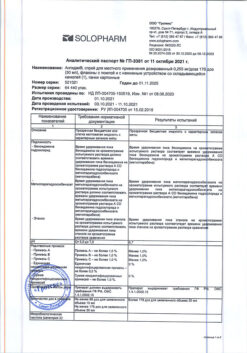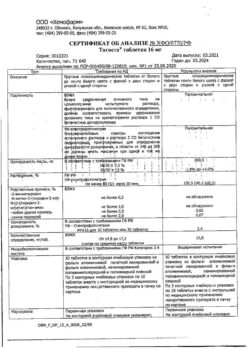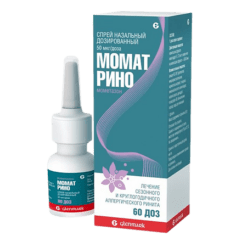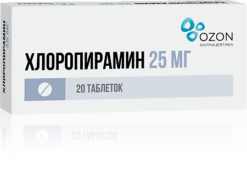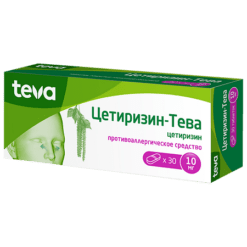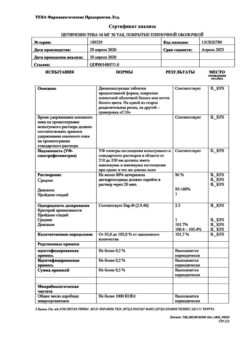No products in the cart.
Rhinonorm, spray 140 mcg/dose 20 ml
€1.00
Out of stock
(E-mail when Stock is available)
Description
Pharmacological group: antikongestive – alpha-adrenomimetic.
ATX code: R01AA07
Pharmacological effect:
Xylometazoline is an alpha-adrenomimetic used for topical use in ENT practice.
When used topically, xylometazoline causes narrowing of arterioles, which results in decreased hyperemia and edema of nasopharyngeal mucous membranes and decreased secretion. A clear local action of the drug is revealed within a few minutes and remains for several hours (up to 6-8 hours), manifested in restoration of patency of nasal passages, sinus orifices and eustachian tubes. Restoration of nasopharyngeal air patency improves the patients’ well-being and reduces the risk of possible complications caused by mucous secretion congestion.
Pharmacokinetics:
When administered topically, xylometazoline is virtually not absorbed, so plasma concentrations are very low (not analytically detectable).
Indications
Indications
Acute respiratory diseases with symptoms of rhinitis (runny nose), acute allergic rhinitis, hay fever, sinusitis, eustachitis, otitis media (as part of combination therapy to reduce swelling of the nasopharyngeal mucosa). Preparing the patient for diagnostic manipulations in the nasal passages.
Pharmacological effect
Pharmacological effect
Pharmacological group: anticongestive agent – alpha-adrenergic agonist.
ATX code: R01AA07
Pharmacological action:
Xylometazoline is an alpha-adrenergic agonist used for topical use in ENT practice.
When applied topically, xylometazoline causes constriction of arterioles, which leads to a decrease in hyperemia and swelling of the mucous membranes of the nasopharynx and a decrease in secretion. A distinct local effect of the drug is detected within a few minutes and persists for several hours (up to 6-8 hours), manifesting itself in the restoration of patency of the nasal passages, sinus openings and eustachian tubes. Restoring the air patency of the nasopharynx improves the well-being of patients and reduces the risk of possible complications caused by stagnation of mucous secretions.
Pharmacokinetics:
When applied topically, xylometazoline is practically not absorbed, so the concentrations in the blood plasma are very small (not analytically determined).
Special instructions
Special instructions
Patients with long QT syndrome taking xylometazoline may be at increased risk of serious ventricular arrhythmias.
Impact on the ability to drive vehicles and machinery:
There was no effect on the ability to drive vehicles or control machines and mechanisms.
Active ingredient
Active ingredient
Xylometazoline
Composition
Composition
1 dose of the drug contains the active ingredient: xylometazoline hydrochloride 0.14 mg; excipients: benzalkonium chloride (in the form of a 50% solution) 0.056 mg in terms of benzalkonium chloride 0.028 mg, citric acid monohydrate 0.07 mg, sodium citrate dihydrate 0.364 mg, glycerol 85% 3.36 mg, purified water 136.71 mg.
Pregnancy
Pregnancy
The drug should not be taken during pregnancy. Use with caution during breastfeeding.
Contraindications
Contraindications
– hypersensitivity to xylometazoline or any of the excipients of the drug;
– arterial hypertension;
– tachycardia;
– severe atherosclerosis;
– glaucoma;
– hyperthyroidism;
– atrophic rhinitis;
– inflammatory diseases of the skin or mucous membrane of the nasal vestibule;
– surgical interventions on the meninges (history);
– condition after transsphenoidal hypophysectomy;
– pregnancy;
– use of monoamine oxidase inhibitors (MAO) (including 14 days after their withdrawal), tricyclic or tetracyclic antidepressants;
– children under 6 years of age.
With caution:
Diabetes mellitus; severe cardiovascular diseases (including coronary heart disease, angina pectoris); prostatic hyperplasia; pheochromocytoma; porphyria; breastfeeding period; increased sensitivity to adrenergic drugs, accompanied by insomnia, dizziness, arrhythmia, tremor, increased blood pressure; patients with long QT syndrome.
Side Effects
Side Effects
According to the World Health Organization (WHO), the frequency of side effects is distributed as follows: very common (≥1/10), common (≥1/100 to <1/10), uncommon (≥1/1000 to <1/100), rare (≥1/10000 to <1/1000), very rare (<1/10000); frequency is unknown (it is not possible to determine the frequency of occurrence based on available data).
From the immune system: rarely – allergic reactions (angioedema, skin rash, itching).
From the nervous system: rarely – headache, dizziness, hallucinations (mainly in children), convulsions (mainly in children), depression (with long-term use in high doses);
very rarely – anxiety, insomnia, drowsiness;
frequency unknown – fatigue, paresthesia.
From the senses: very rarely – disturbance of visual perception.
From the cardiovascular system: rarely – palpitations, increased blood pressure;
very rarely – tachycardia, arrhythmia.
From the respiratory system: often – irritation and/or dryness of the nasal mucosa, sneezing, hypersecretion of the nasopharyngeal mucosa;
uncommon – nosebleeds, tingling or burning sensation in the nose and throat;
frequency unknown – after using the drug, increased swelling of the nasal mucosa (reactive hyperemia) may be observed.
From the digestive system: very rarely – nausea;
frequency unknown – vomiting.
If any of the side effects indicated in the instructions get worse, or you notice any other side effects not listed in the instructions, tell your doctor.
Interaction
Interaction
Concomitant use of tri- or tetracyclic antidepressants may increase the systemic exposure of xylometazoline. When taking the drug simultaneously with monoamine oxidase inhibitors (MAOIs), there may be a risk of increased blood pressure.
Overdose
Overdose
In rare cases of overdose, which occurs mainly in children, the following symptoms may be observed: irregular pulse, increased blood pressure, and in some cases, loss of consciousness. In case of overdose, symptomatic treatment under supervision is indicated.
In serious cases, non-selective alpha-blockers may be used to lower blood pressure, as well as intubation and mechanical ventilation. Vasoconstrictor drugs are contraindicated.
If you accidentally take a moderate or large amount of the drug orally, you should take activated carbon (adsorbent) and sodium sulfate (laxative), and do a gastric lavage.
Storage conditions
Storage conditions
The drug should be stored out of the reach of children at a temperature not exceeding 25°C.
Shelf life
Shelf life
3 years, after opening the bottle – 1 year.
Manufacturer
Manufacturer
Merkle GmbH, Germany
Additional information
| Shelf life | 3 years, after opening the bottle – 1 year. |
|---|---|
| Conditions of storage | The drug should be kept out of reach of children at a temperature not exceeding 25 ° C. |
| Manufacturer | Merkle GmbH, Germany |
| Medication form | dosed nasal spray |
| Brand | Merkle GmbH |
Related products
Buy Rhinonorm, spray 140 mcg/dose 20 ml with delivery to USA, UK, Europe and over 120 other countries.

